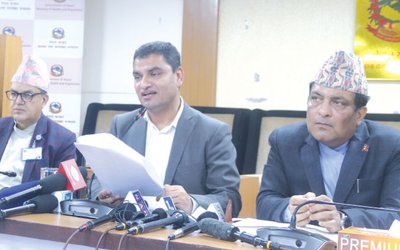People in the bottom billion are the poorest (<1.25 $ per day) in the world, and there is clearly an intimate link between poverty and disease. This is especially true for simple worm( helminths) infestation like hookworm and roundworm.These are infections transmitted from the soil or by fecal- oral route. Globally about 600 to 800 million people, mostly children are infected with the soil-transmitted helminth infections. Hookworm infection causes childhood and maternal anemia and results in the greatest disability. Amongst neglected tropical diseases ( NTDs), it causes the highest burden of disease.The overwhelming prevalence and the clear amenability to control of these helmintheshas drawn tremendous attention.
What can be done for young children today infected with these worms that lead to malnutrition and anemia?Improved sanitation is important, but this is a long- term process. In the meantime mass drug administration ( MDA), such as the use of the effective, anti-worm drug albendazole for whole communities may be a simple answer. MDA utilizes the concept that a certain disease isso common in the community that individual tests and diagnosis is unnecessary. Hence everyone in the community is treated regardless of their infection status. MDAs for neglected tropical diseases like helminth infestation provides some of the highest rates of economic return in any public health programme. Importantly this kind of programme also addresses fundamental human rights issues concerning health. For example drug companies working with the World Health Organization, the World Bank and other UN agencies help provide MDAlike albendazole to millions of people every year. Not unsurprisingly this has lead to control and in some cases elimination of some of these diseases. No where is this kind of campaign better known than in Sub Saharan Africa where a network of more than 162000 community based drug distributors provided mass treatment of not only albendazole but also vitamin A distritbution, childhood vaccinations and antimalarial bednets. There was also national surveillance and monitoring system in place which improved operational research and even laboratory services in these impoverished areas. Clearly this was a tremendous boost to the health services in sub -Saharan Africa.
The concept of MDA is certainly not new in Nepal, but perhaps the campaign needs to be more widespread. The best known MDA campaign here is with the drug diethyl carbamazinewas againstfilariasis( the disease that causes elephantiasis or “hattipaila”) carried out in certain districts in Nepal. At present MDA against filariasis has been stopped to conduct a pos-MDA surveillance . There is every reason to think that this surveillance will show positive results as has been the case in other parts of the world where this MDA campaign has been instituted against filariasis. For example, 173 districts in India have completed more than five rounds of MDA against filariasis and have reached a rate of less than 1 % forthat disease in the community. Many other diseases lend themselves to MDA. Trachoma which is a very common bacterial infection of the eye that may lead to devastating complications can be treated with the drug azithromycin.MDA campaigns against trachoma have been sporadically carried out in Nepal with good results.
Unfortunately there are many other NTDs in Nepal that cannot be controlled or eliminated by MDA. For example, WHO data shows that of the almost 55000 cases of rabies worldwide, 22000 ( about 40%) takes place in the Indian subcontinent. A strong public health drive possibly including vaccines may be the only way to prevent this tragic disease. There is no magic bullet.
One of the most potent reinforcements of the poverty trap are NTDs, and hopefully our new Nepali government will tackle NTDs with renewed enthusiasm and commitment.

Buddha Basnyat MD
Buddha Basnyat, MD, MSc, FACP, FRCP, Director of the Oxford University Clinical Research Unit-Patan Academy of Health Sciences, Kathmandu.
- Altitude Sickness
- Feb 20, 2018
- Post-earthquake Nepal: The Way Forward
- Dec 13, 2015
- The Annapurna Sanctuary
- Nov 29, 2015
- Diarrhea at the Summit
- Nov 08, 2015
- Altitude Sickness ( AMS, HAPE, HACE)
- Oct 15, 2015















